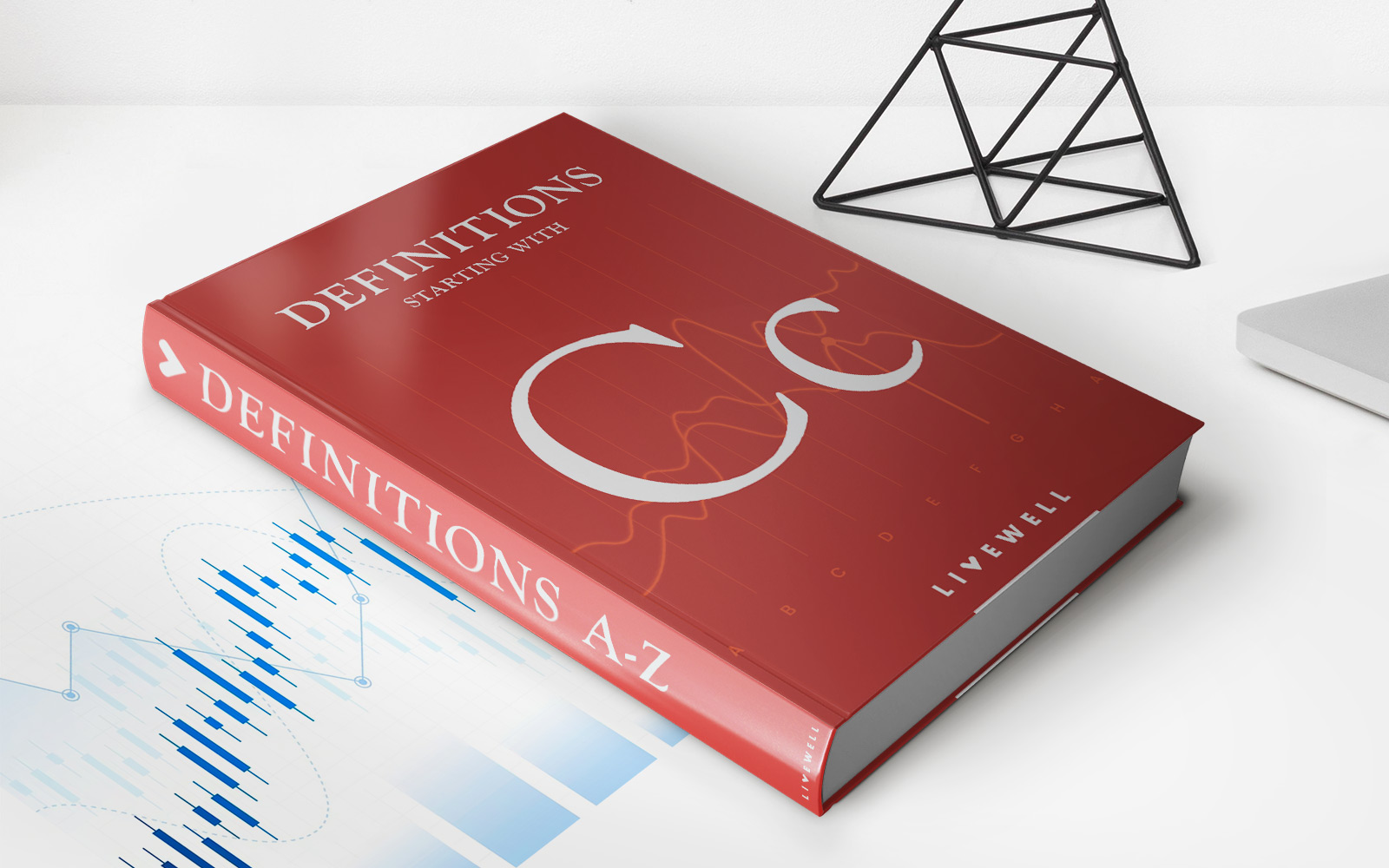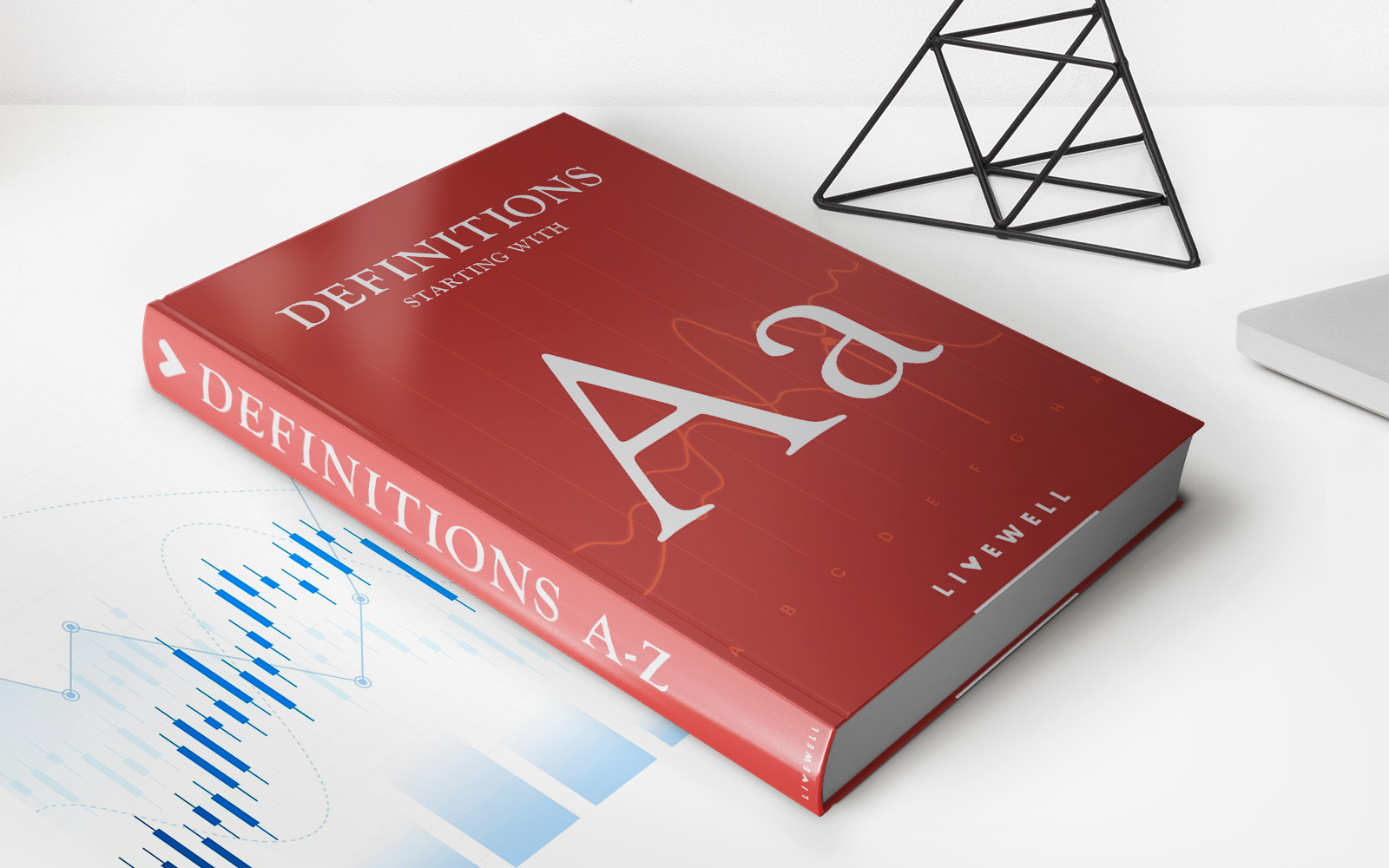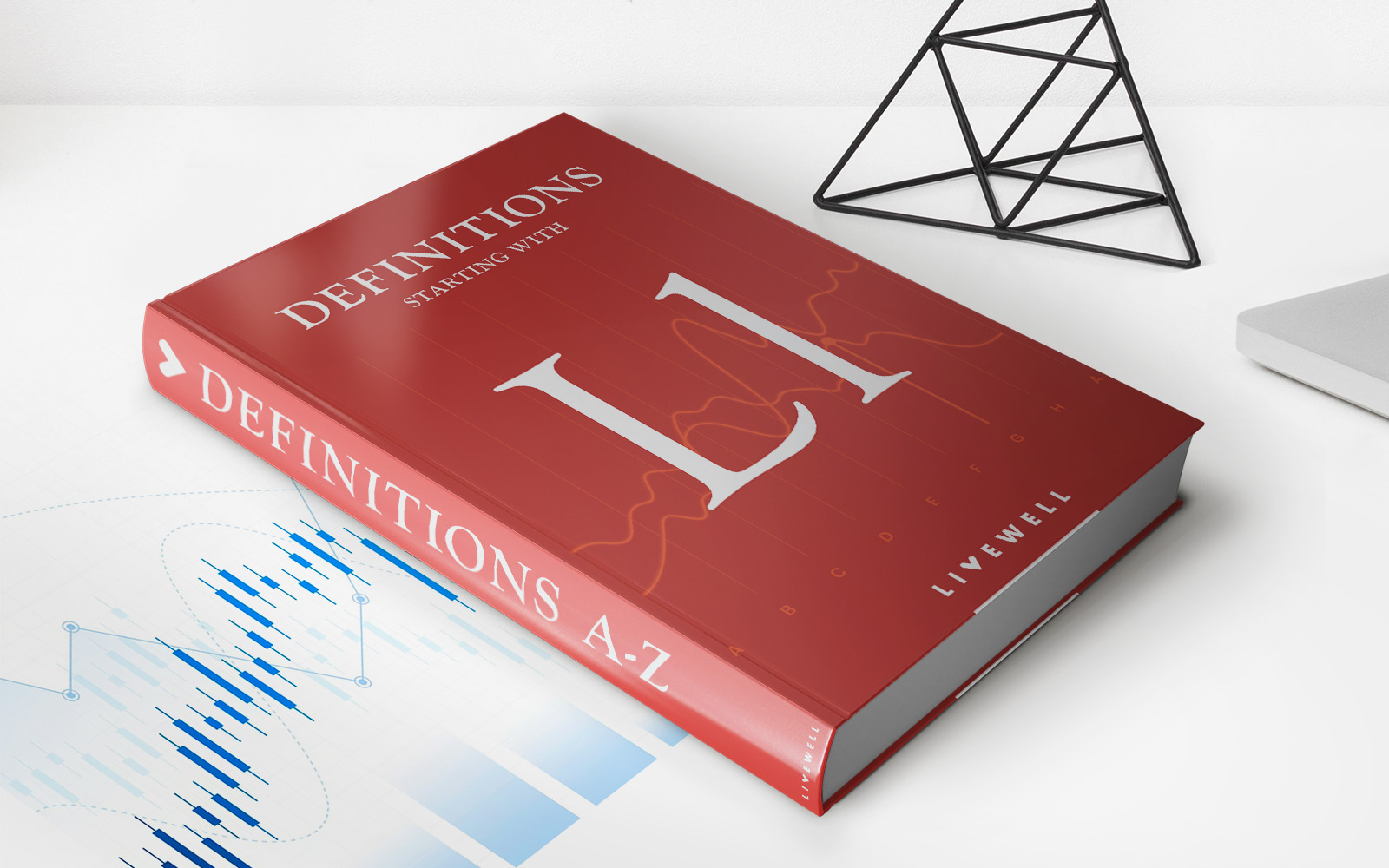

Finance
What Is A 20-Year Term Life Insurance?
Published: October 16, 2023
Discover the benefits and features of a 20-year term life insurance policy in the world of finance. Secure your financial future with this flexible and affordable option.
(Many of the links in this article redirect to a specific reviewed product. Your purchase of these products through affiliate links helps to generate commission for LiveWell, at no extra cost. Learn more)
Table of Contents
- Introduction
- Definition of 20-Year Term Life Insurance
- How Does 20-Year Term Life Insurance Work?
- Benefits of 20-Year Term Life Insurance
- Drawbacks of 20-Year Term Life Insurance
- Is 20-Year Term Life Insurance Right for You?
- Factors to Consider Before Purchasing 20-Year Term Life Insurance
- Comparing 20-Year Term Life Insurance with Other Types of Life Insurance
- How to Choose the Best 20-Year Term Life Insurance Policy
- Conclusion
Introduction
Life insurance is a crucial component of financial planning, providing you with peace of mind and financial protection for your loved ones in the event of your untimely death. There are several types of life insurance policies available, each with its own features and benefits. One such policy is the 20-year term life insurance.
Term life insurance is a temporary form of coverage that provides a death benefit for a specific period, or term. The 20-year term life insurance policy, as the name suggests, offers coverage for a period of 20 years. It is a popular choice for individuals seeking affordable coverage to protect their families during a specific time frame, such as the duration of a mortgage or while their children are dependent on their income.
During the 20-year term, if the policyholder passes away, the insurer will pay a death benefit to the designated beneficiaries. However, if the policyholder survives the term, the coverage will expire without any payout.
Now that we have a basic understanding of what a 20-year term life insurance policy entails, let’s take a closer look at how it works, the benefits it offers, its drawbacks, and whether it might be the right option for you and your family.
Definition of 20-Year Term Life Insurance
20-Year Term Life Insurance is a type of life insurance policy that provides coverage for a specific period of 20 years. It falls under the category of term life insurance, which means it offers temporary protection rather than lifelong coverage. This type of policy is designed to provide financial security to your loved ones in the event of your death during the specified 20-year term.
Unlike permanent life insurance policies such as whole life or universal life insurance, which provide coverage for the entire lifetime of the insured individual, 20-Year Term Life Insurance offers coverage for a predetermined time frame. This makes it a more affordable option for individuals who may only need coverage for a specific period, such as until their mortgage is paid off or until their children are financially independent.
The death benefit provided by a 20-Year Term Life Insurance policy is paid out to the designated beneficiaries in the event of the insured’s death during the term. This financial payout can help cover various expenses, including funeral costs, outstanding debts, ongoing living expenses, and education expenses for dependents.
It is important to note that once the 20-year term is complete, the policy will expire, and no further coverage or benefits will be provided. However, many insurance companies offer the option to convert a term life insurance policy into a permanent policy before the term ends, providing continued coverage beyond the specified period.
Overall, 20-Year Term Life Insurance offers a cost-effective way to ensure your loved ones are financially protected during a specific time frame when they may be most vulnerable. It provides you with the peace of mind of knowing that your family’s financial needs will be taken care of if the unexpected occurs.
How Does 20-Year Term Life Insurance Work?
20-Year Term Life Insurance works by providing coverage for a specific period of 20 years. Here’s how it typically works:
- Choosing the Coverage Amount: When purchasing a 20-Year Term Life Insurance policy, you’ll need to determine the coverage amount you require. This amount should be sufficient to cover your beneficiaries’ financial needs in the event of your death. Consider factors such as outstanding debts, funeral expenses, ongoing living expenses, and education costs.
- Paying Premiums: To maintain coverage, you’ll have to pay regular premiums throughout the term. The premium amount is determined by various factors, including your age, health condition, lifestyle choices, and coverage amount. It’s important to make timely premium payments to keep the policy active.
- Death Benefit Payout: If you pass away during the 20-year term, the insurance company will pay out the death benefit to your designated beneficiaries. This lump sum payout can help them meet their financial obligations and maintain their quality of life in your absence.
- Expiration of Coverage: Once the 20-year term is complete, the coverage provided by the policy will expire. At this point, you will no longer have life insurance coverage unless you choose to convert or renew the policy. It’s important to consider your future needs and options well before the term ends.
- Conversion and Renewal Options: Many insurance companies offer the option to convert a 20-Year Term Life Insurance policy into a permanent life insurance policy, such as whole life or universal life insurance. Converting the policy allows you to continue coverage beyond the initial term without the need to undergo a medical examination. Another alternative is to renew the policy for another term, typically at a higher premium rate.
It’s important to understand the terms and conditions of the policy, including any exclusions and limitations, before purchasing 20-Year Term Life Insurance. Additionally, it’s crucial to review your coverage periodically to ensure it aligns with your changing financial needs and goals.
Benefits of 20-Year Term Life Insurance
20-Year Term Life Insurance offers several benefits that make it an attractive option for individuals looking for temporary protection. Here are some key benefits of this type of life insurance:
- Affordability: 20-Year Term Life Insurance is generally more affordable compared to permanent life insurance policies. This is because it provides coverage for a specific period, without the added expenses of cash value accumulation or investment components.
- Flexibility: The fixed term of 20 years provides flexibility to align coverage with specific financial obligations or goals. For example, if you have a mortgage that will be paid off in 20 years, you can choose a policy that matches the term to ensure your family is protected in the event of your death.
- Protection during critical life stages: 20-Year Term Life Insurance is commonly chosen by parents who want to ensure their children are financially protected until they become financially independent. This coverage can help cover living expenses, education costs, and other financial obligations during this crucial period.
- Death benefit payout: If the policyholder passes away during the term, the designated beneficiaries receive a tax-free death benefit. This lump sum payout can help provide financial stability and security to cover funeral expenses, outstanding debts, and ongoing living expenses for the family.
- Convertible options: Many insurance companies offer the option to convert a 20-Year Term Life Insurance policy into a permanent policy without the need for a medical examination. This allows you to extend coverage beyond the original term if your needs change or if you want lifelong protection.
These benefits of 20-Year Term Life Insurance make it a practical choice for individuals who want affordable, temporary coverage that aligns with their specific financial goals. It allows you to have the assurance that your loved ones will be financially secure during critical life stages and that any outstanding obligations can be taken care of in your absence.
Drawbacks of 20-Year Term Life Insurance
While 20-Year Term Life Insurance offers many advantages, it’s important to be aware of its drawbacks as well. Here are some of the potential disadvantages you should consider before purchasing this type of policy:
- No Cash Value: Unlike permanent life insurance policies, 20-Year Term Life Insurance does not accumulate cash value over time. This means that if you outlive the policy term, you won’t receive any return on the premiums you paid.
- Expiration of Coverage: Once the 20-year term is complete, the coverage provided by the policy will expire. This means that if you still need life insurance coverage after the term, you would have to apply for a new policy, which can be more expensive, especially if your health has deteriorated.
- Potential premium increases: While your premiums for 20-Year Term Life Insurance are initially fixed, some policies may have the potential for premium increases. This usually happens if the insurance company decides to increase the rates for a specific group of policyholders or if you choose to renew the policy for another term.
- No Return on Premiums: If you decide to cancel the policy before the 20-year term is complete, you won’t receive any refund on the premiums you have already paid. This means that if you no longer need the coverage or find a more suitable policy, you could potentially lose the money invested in the premiums.
- No lifelong coverage: 20-Year Term Life Insurance is designed to provide protection for a specific period, but it may not meet your needs if you require coverage for your entire lifetime. If your goal is to leave a financial legacy or have ongoing protection, you may need to consider permanent life insurance options.
It’s essential to carefully evaluate these drawbacks against your specific needs and financial goals. While 20-Year Term Life Insurance can be a cost-effective solution for temporary coverage, it’s crucial to have a comprehensive understanding of its limitations and consider other life insurance options for long-term financial protection if needed.
Is 20-Year Term Life Insurance Right for You?
Deciding whether 20-Year Term Life Insurance is the right choice for you depends on various factors. Here are some considerations to help you determine if this type of policy aligns with your needs and goals:
1. Temporary Coverage Needs: If you only need life insurance coverage for a specific period, such as until your mortgage is paid off or until your children become financially independent, a 20-Year Term Life Insurance policy can be a suitable option. It provides protection during critical life stages without the commitment of lifelong coverage.
2. Affordability: If you are looking for an affordable life insurance option, 20-Year Term Life Insurance typically offers lower premiums compared to permanent life insurance policies. This can be beneficial if you have a limited budget but still want to ensure financial protection for your loved ones.
3. Specific Financial Obligations: If you have specific financial obligations or goals that will be completed within 20 years, such as a child’s education or paying off debts, this type of policy can provide the necessary coverage during that time frame.
4. Flexibility for Future Changes: Consider whether you may need to adjust your life insurance coverage in the future. If you anticipate your needs changing or if you desire the option to convert the policy into a permanent one, 20-Year Term Life Insurance offers flexibility for potential modifications.
5. Health Status and Age: Age and health play a significant role in life insurance premiums. If you are young and in good health, you may qualify for lower premium rates. However, if you have health issues or are older, the cost of coverage may be higher, making it important to carefully consider the affordability aspect.
Ultimately, the decision to choose 20-Year Term Life Insurance depends on your unique circumstances and financial goals. It’s recommended to evaluate your current and future needs, consider other types of life insurance coverage if necessary, and consult with a qualified insurance professional to determine the most suitable option for you and your loved ones.
Factors to Consider Before Purchasing 20-Year Term Life Insurance
Before purchasing a 20-Year Term Life Insurance policy, it’s important to consider several factors that can impact your decision. Here are some key factors to evaluate:
- Financial Needs: Assess your financial obligations and determine the amount of coverage you require. Consider outstanding debts, funeral expenses, ongoing living expenses, and any specific goals or responsibilities that need to be addressed in your absence.
- Affordability: Determine how much you can comfortably afford to pay in premiums. Compare quotes from different insurance providers to find a policy that fits within your budget. Keep in mind that premiums can vary based on factors such as age, health, and coverage amount.
- Health and Age: Your health condition and age can impact your eligibility for coverage and the cost of premiums. Generally, younger and healthier individuals tend to qualify for lower premium rates. If you have any pre-existing health conditions, it’s important to disclose them honestly during the application process.
- Conversion Options: Check if the 20-Year Term Life Insurance policy offers the option to convert to a permanent policy without the need for a medical examination. This can be beneficial if your needs change in the future, allowing you to extend coverage beyond the initial term.
- Insurer’s Reputation: Research and evaluate the reputation and financial stability of the insurance company offering the 20-Year Term Life Insurance policy. Consider factors such as customer reviews, ratings from independent rating agencies, and the company’s history of claim settlement.
- Policy Exclusions and Limitations: Carefully review the terms and conditions of the policy, including any exclusions or limitations. Understand what circumstances may prevent a payout and whether there are any restrictions on activities, travel, or occupations that could impact the coverage.
- Financial Planning Goals: Evaluate how the 20-Year Term Life Insurance policy aligns with your long-term financial planning goals. Consider whether the coverage meets your needs for future obligations, such as retirement planning, leaving a financial legacy, or providing for dependents.
By carefully considering these factors, you can make an informed decision about whether 20-Year Term Life Insurance is the right choice for your specific circumstances. It’s recommended to seek guidance from a qualified insurance professional who can assess your needs and help you choose the most suitable coverage.
Comparing 20-Year Term Life Insurance with Other Types of Life Insurance
When considering life insurance options, it’s important to compare 20-Year Term Life Insurance with other types of policies to determine the best fit for your needs. Here’s a comparison of 20-Year Term Life Insurance with other common types of life insurance:
1. Permanent Life Insurance: Unlike 20-Year Term Life Insurance, permanent life insurance provides coverage for your entire lifetime. It also includes a cash value component that accumulates over time and can be accessed while you are still alive. Permanent life insurance offers lifelong protection and can be used for estate planning or leaving a financial legacy. However, it is typically more expensive than term life insurance.
2. Whole Life Insurance: Whole life insurance is a type of permanent life insurance that offers guaranteed death benefit coverage for your entire life, as long as premiums are paid. It also includes a cash value component that grows over time and can be borrowed against or withdrawn. Whole life insurance provides fixed premiums and guaranteed cash value growth, making it a predictable option, but it is generally more expensive than term life insurance.
3. Universal Life Insurance: Universal life insurance is another form of permanent life insurance that provides flexibility in premium payments and death benefit amounts. It also includes a cash value component that earns interest based on market rates. Universal life insurance allows you to adjust your coverage and premiums over time to meet changing needs. However, it requires more active management and can be subject to changes in interest rates.
4. Variable Life Insurance: Variable life insurance is a type of permanent life insurance that allows you to invest the cash value component in various investment options, such as stocks and bonds. It offers potential growth based on the performance of the chosen investments. Variable life insurance provides flexibility and potential higher returns, but it also carries investment risk and may require more active management.
When comparing these types of life insurance policies, it’s important to consider factors such as your budget, coverage needs, desired flexibility, and long-term financial goals. Determine whether you need temporary or lifelong coverage, if you want a cash value component, and your risk tolerance for potential fluctuations in cash value. It’s recommended to consult with a qualified insurance professional who can assess your specific needs and guide you towards the most appropriate choice.
How to Choose the Best 20-Year Term Life Insurance Policy
Choosing the best 20-Year Term Life Insurance policy requires careful consideration of your needs and thorough research. Here are some steps to help you select the right policy:
- Determine Your Coverage Needs: Assess your financial obligations, including outstanding debts, funeral expenses, and ongoing living expenses. This will help you determine the coverage amount you require to adequately protect your loved ones.
- Shop Around for Quotes: Obtain quotes from multiple insurance companies to compare premiums and coverage terms. Be sure to provide accurate information about your age, health, and lifestyle to receive accurate quotes.
- Research the Insurer’s Reputation: Evaluate the financial strength and reputation of the insurance companies you are considering. Look for customer reviews, ratings from independent agencies, and the company’s history of claims settlement.
- Review the Policy Terms: Read and understand the terms and conditions of the policy, including any exclusions or limitations. Pay attention to details such as renewal options, conversion options, and premium payment frequencies.
- Compare Additional Benefits: Consider any additional benefits offered by the insurance company, such as accelerated death benefits, which allow you to access a portion of the death benefit if you are diagnosed with a terminal illness.
- Consult with an Insurance Professional: Seek guidance from a qualified insurance professional who can assess your needs and provide personalized recommendations. They can help you understand the policy details, explain complex terms, and ensure you have chosen the most suitable coverage.
- Consider the Financial Stability: Verify the financial stability of the insurance company. This will ensure that they are capable of fulfilling their obligations and paying out the death benefit when needed.
- Read and Understand the Fine Print: Carefully read the policy documents, including any disclosure statements or riders. Pay attention to any clauses related to non-payment of premiums, lapses in coverage, or changes to the policy terms.
- Review and Update Your Policy Regularly: Periodically review your policy to ensure it still aligns with your changing financial needs and goals. Consider updating your coverage if your circumstances have significantly changed.
By following these steps and conducting thorough research, you can choose the 20-Year Term Life Insurance policy that offers the right coverage and financial protection for you and your loved ones. Remember to take your time, compare options, and seek professional advice to make an informed decision.
Conclusion
20-Year Term Life Insurance is a valuable financial tool that provides temporary coverage and peace of mind for individuals and their families. It offers affordable premiums and flexibility to align with specific financial obligations or goals within a 20-year period.
By understanding the definition, benefits, drawbacks, and factors to consider before purchasing a 20-Year Term Life Insurance policy, you can make an informed decision about whether it is the right choice for you. Evaluating your financial needs, affordability, health status, and long-term goals will help guide your decision-making process.
Comparing 20-Year Term Life Insurance with other types of life insurance policies can provide a broader perspective on the available options. It’s important to consider the differences in coverage duration, premium costs, cash value accumulation, and flexibility to find the best fit for your unique circumstances and priorities.
When choosing the best 20-Year Term Life Insurance policy, it is crucial to thoroughly research insurance companies, obtain multiple quotes, analyze policy terms and benefits, and consult with a qualified insurance professional. This will ensure that you select a reputable insurer, acquire adequate coverage, and have a clear understanding of the policy’s terms and conditions.
Regularly reviewing and updating your policy as needed is essential to ensure that it continues to meet your changing financial needs. Life circumstances can evolve, and having the most suitable coverage in place is crucial for the well-being of you and your loved ones.
In conclusion, 20-Year Term Life Insurance provides a cost-effective solution for temporary coverage, allowing you to protect your family during specific life stages or financial obligations. By carefully considering your needs, comparing options, and seeking professional advice, you can make a well-informed decision about the right 20-Year Term Life Insurance policy for you.














